Artist based in Kediri, Indonesia

Arief Priyono, Portrait of the photography. Photo by Bayu Novanta
Tell us about yourself, what's your background?
I was born from a low-income farmer. Previously when I was at university, photography was a luxury and out of my reach, therefore I chose theater to express myself. From that moment I learned how to write, especially poems and short stories. With that ability, before I graduated I became a news reporter in a local media.
An opportunity led me to learn journalistic photography in Antara School of Journalism. That was the first time I learned to take a photo with a Pentax K1000 50mm lens camera.
I was given a chance to be a photo contributor afterwards at Antara (Indonesian News Agency), a few years after, I became a contract photographer from 2007 until 2012. Following that I proceeded to be a freelance photographer for several local and international publications.

Portrait of Paulus Irawan Prajitno at his house in Anjasmoro Streets number 25
"Irawan Grandfather's House and The Protected Neighborhoods" (Digital Photography)
Divorce made me heart broken and took a step back from photography. In 2017, I started a business in the coffee industry. I still took pictures, but the intensity was much lower and seemed aimless or just to fill out the time.
In 2020 I met a good friend of mine who gave me his father's inheritance, a Hasselblad 500CM medium format analog camera. His father was an entrepreneur in the coffee industry and had a hobby which is photography. I had been asked to repair and took care of the camera. That moment made me learn once again to enjoy photography as a work process. Prior to that I never had a chance to take a photo with a medium format camera, thus I had to adapt and learn a lot.
However, starting from there I got the enjoyment of photography once again. I became more disciplined and patient. Analog photography forced me to reduce my pace and contemplate more. When shooting I don’t just look at beautiful compositions, if the sky is blue, or if the moment is dramatic. But my consideration before deciding to press the shutter button is more on whether this photo will contribute to my story.
Of course I didn’t abandon my digital camera due to its conveniences. Capturing with an analog camera is not just an artistic approach or an attempt to look cool by making things difficult, but that’s a part of my effort to enjoy and fall in love with photography again.
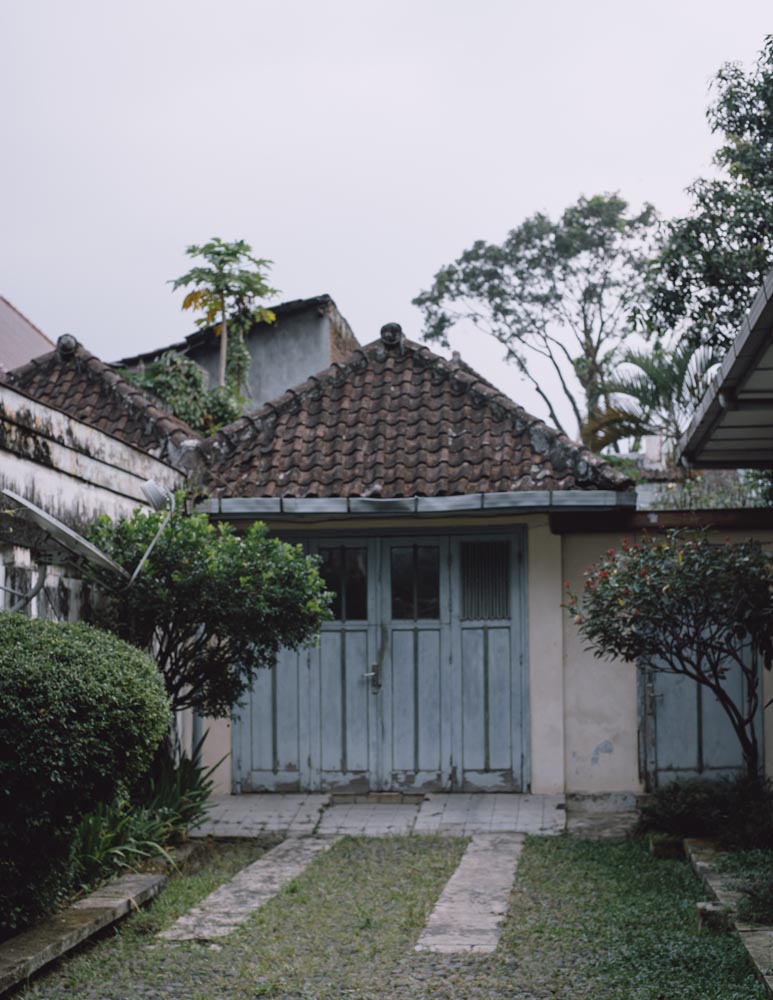
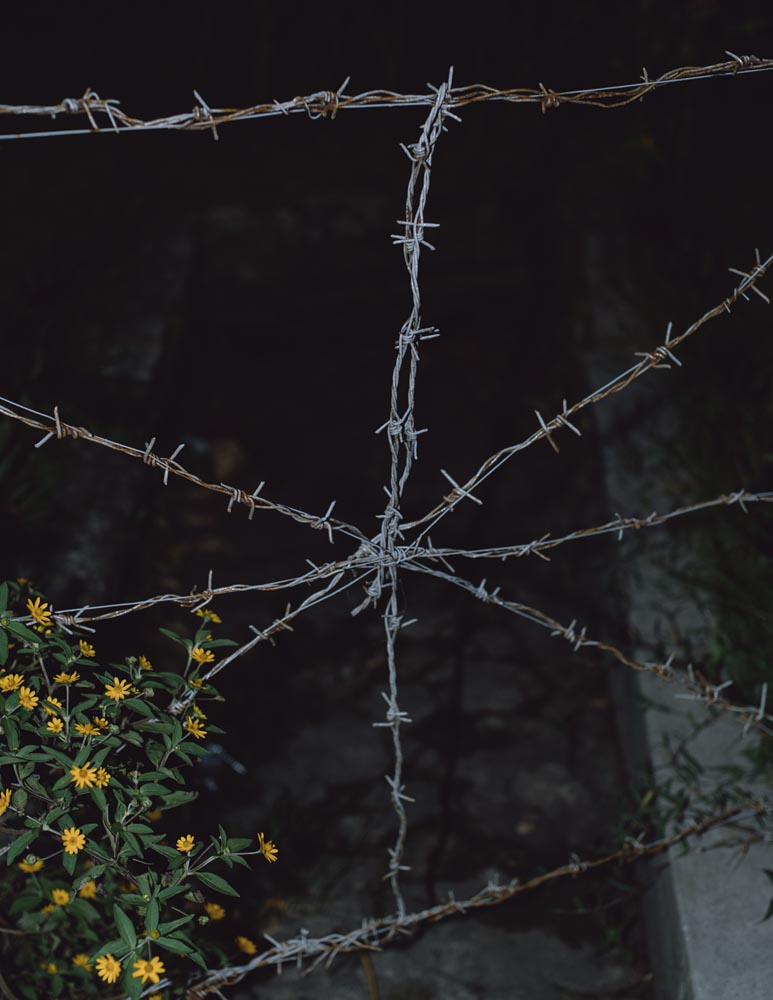
(left) Side house or garage in Anjasmoro street number 25 (right) Barbed wire in Panggung Street, Malang City
"Irawan Grandfather's House and The Protected Neighborhoods" (Digital Photography)
"Analog photography forced me to reduce my pace and contemplate more. When shooting I don’t just look at beautiful compositions, if the sky is blue, or if the moment is dramatic. But my consideration before deciding to press the shutter button is more on whether this photo will contribute to my story."
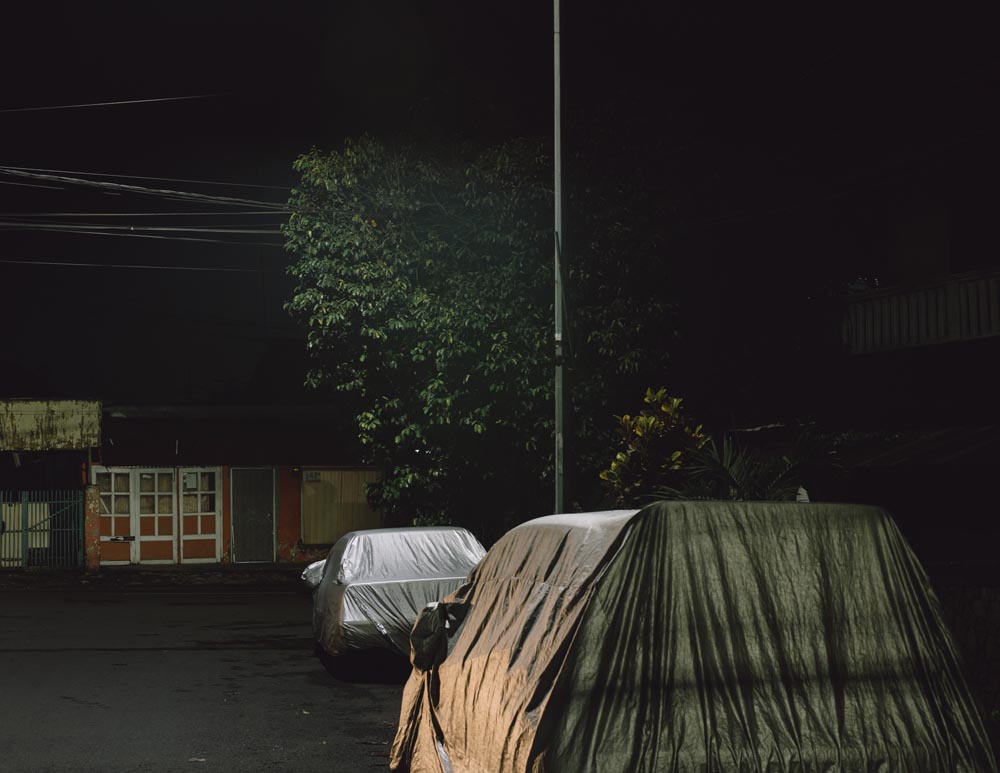
Oro-Oro Dowo sights from Anjasmoro and Panggung streets intersection
"Irawan Grandfather's House and The Protected Neighborhoods" (Digital Photography)
What are you currently working on and where did the inspiration for it come from?
At the present time, I’m doing “Irawan Grandfather's House and The Protected Neighborhoods” project. It is a story regarding an area called internment camp back in World War II era which is inhabited by 7000 people, women and children. The internment camp was in Malang City surrounding Idjen Boulevard “mountains street area” which was formerly inhabited by businessmen and municipal officials who were mostly Dutch and European citizens. The houses in this area were designed by a Dutch architect named Herman Thomas Karsten.
The large camp was initiated in November-December 1942 as a “protected neighborhoods” located near Merbaboe Park in Malang, East Java, Indonesia. In mid-1943, the camp was expanded southward to Welirang Street and northward to Ringgit Road. The camp was encircled by barbed wire and “gedek” (a wall made from woven bamboo). Google Earth estimates the total area of this internment is 606,940.29 m² with 3,509.93 m length of perimeter.
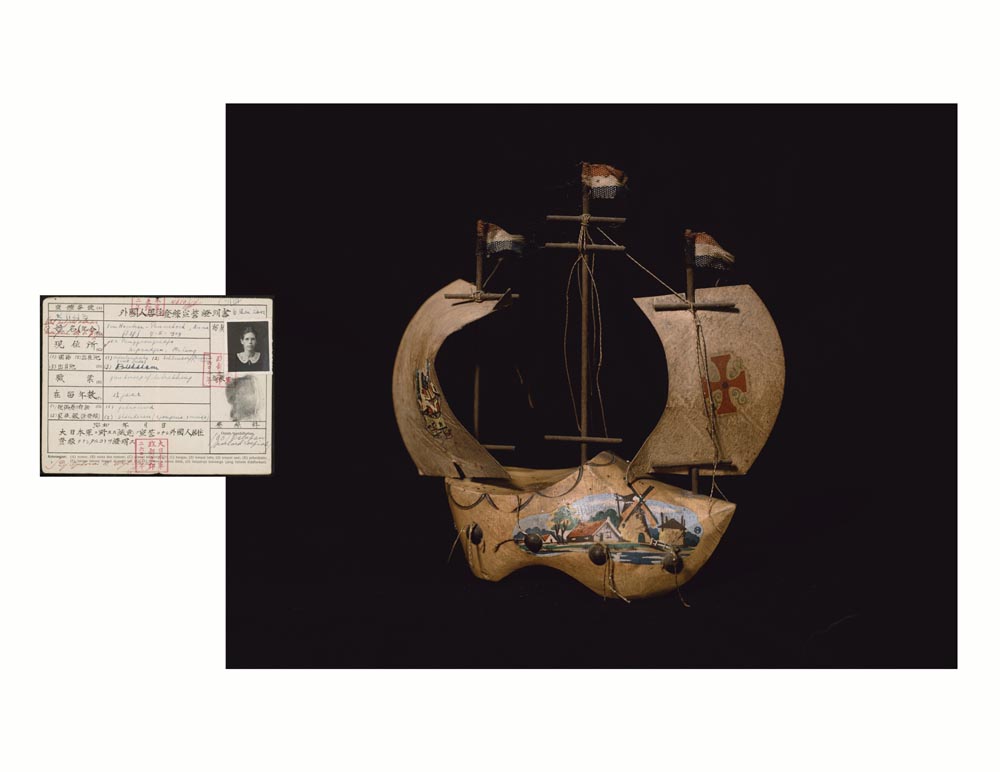
Left : ID with an address at “De Wijk : Dj. Tjikorai 8, Wijk, Malang”. In the back of the ID there is a writing in Japanese and Malay with reference to an oath of allegiance to Japanese Army, that already taken back by the ID’s owner. The camp number is shown at the top right corner : 21646 (collection of Museon Omniversum) Right : A ship with Netherland national flag figurine in Ajasmoro St. house, Malang, East Java. According to Irawan, this figurine already in his family possession since his birth and interpreted as the Interinternment camp prisoners belonging.
All internment camp inmates had to be part of working parties. Even women up to 60 years old had to perform manual labor. Inmates were utilized as garbage and junk collectors, sewer and drain cleaners, kitchen workers, furniture removers, clerical workers, grass cutters, and other chores outside camp jobs.
Some houses in this area are still occupied by the third generation of the original owners. However, most of the houses have sold to the new owners and the vast majority does not know the story relating the house histories. The horrific story about the Japanese army’s atrocity towards its women and children prisoners is nearly forgotten.

Left : A sketch of nuns carried their suitcases out of Interinternment camp area. Sketched by Sister Veneranda (Jarmila Horàk - collection of KITLV) Right : Suitcases collection of Malang Ursuline Gallery, some of them were belonged to the nuns that ever held captive in Interinternment camp.
This project consists of new photos and archives/documents from KITLV, Oorlogs Bronnen, NIOD and Museon Omniversum. Some of the works are a process of montage from those archives.
My inspiration for this project came when I joined an old-building photography tour in Malang held by a local photography community. On that tour, I met Paulus Irawan Prajitno, the tour guide. He told me that he inherited an old house from his grandfather which was used for Dutch women and children detention camps back in the Japan Colonialism era.
Moreover, I am now in the middle of a project called “Springs of Hope”, a project concerning the threat of the death of springs in Trenggalek, East Java as a potential result of a gold mining plan at Karst in South Coast, Indonesia. In this project, for the first time, I used a Hasselbald 500 CM medium format with Ilford HP5 film.
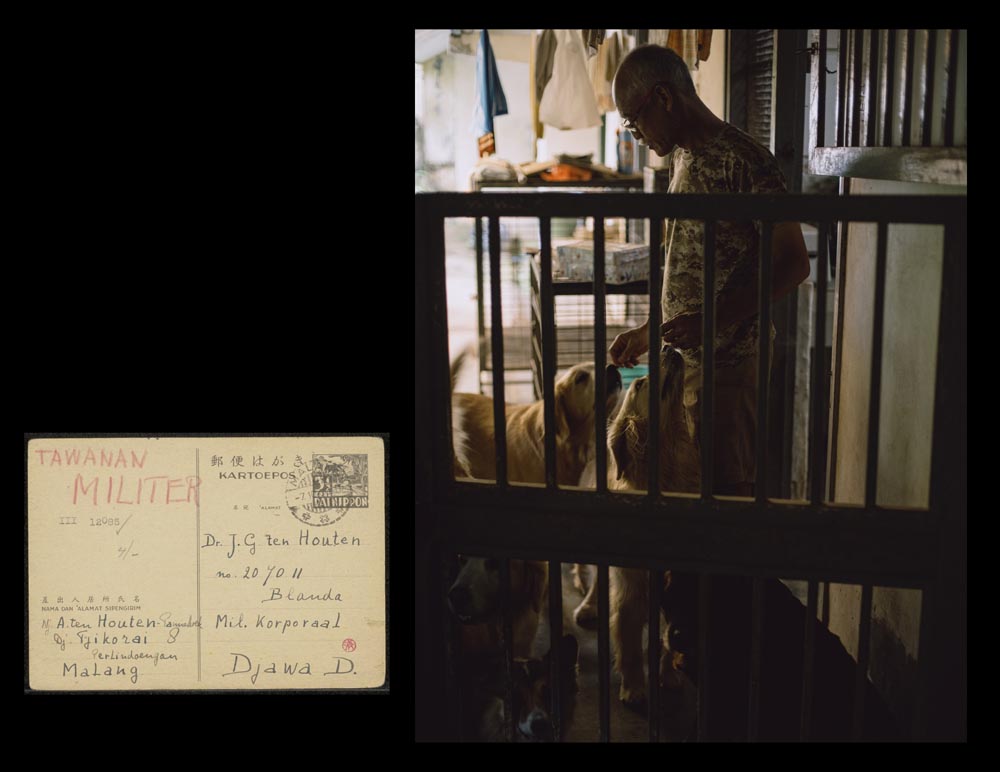
Left : A postcard written with a pen by “Nj(onja) A. Ten Houten-Pannekoek, Dj(alan) Tjikorai 8, Perlindoengan, Malang” addressed to “Dr. J.G. ten Houten, no. 207011, Blanda, Mil. Kopral, Jawa D.”. On the address side written with a red pen “Tawanan Militer” (ed: military prisoner). Behind the postcard is written : “Hans! Bert, Hanneke, dan Anton baik-baik saja. Kami makan cukup. Anak-anak itu manis. Anton sudah bisa berjalan.” (ed: Hans! Bert, Hanneke, and Anton are good. We ate enough. The kids are sweet. Anton already walking.” (collection of Oorlogs Bronnen)
Innovation does not only happen in the field of technology — it occurs everyday in a creative practice. What do you do for inspiration?
In my opinion, inspiration never comes in a sudden. An inspiration comes as a result where we are used to conditioning ourselves to always be ready to receive an inspiration. It can come either from a small talk in a coffee shop and book that we read. I spend a lot of time in front of the laptop just to appreciate the newest photography works and the old ones. Catching up with the news and problems that happen around us also contributes to some ideas. In fact, a lot of my inspirations and my photo subjects were from the closest place and didn't have to be far away from home.
I have a fondness for human observations, what clothes they wear, what topic they are discussing, how they speak from the language, the accent, and their intonations. But more importantly the environment and with whom we spend our time and gather. Every night, before I go to sleep, I always take some time to watch a movie on Netflix. Even just a light and funny movie makes my morning fresher and ready for new ideas.

Zinc fences surrounds Tjerme Park area
From the series "Irawan Grandfather's House and The Protected Neighborhoods" (Digital Photography)
Describe your practice and process. Where do ideas start for you? In the studio or being in the world?
Once I had a special room for work, but that did not help much for creating or getting ideas. Those ideas often came when I just sat in a coffee shop, sipped my coffee and got myself busy with my laptop. I surfed Google to find supporting data then see if the other photographers have made work with the same theme.
I usually share my ideas with the closest ones to test whether the idea is an interesting one or if it's just interesting to me. From my point of view, we don’t have to be afraid that other people will steal our ideas because each of us are in fact unique individuals.
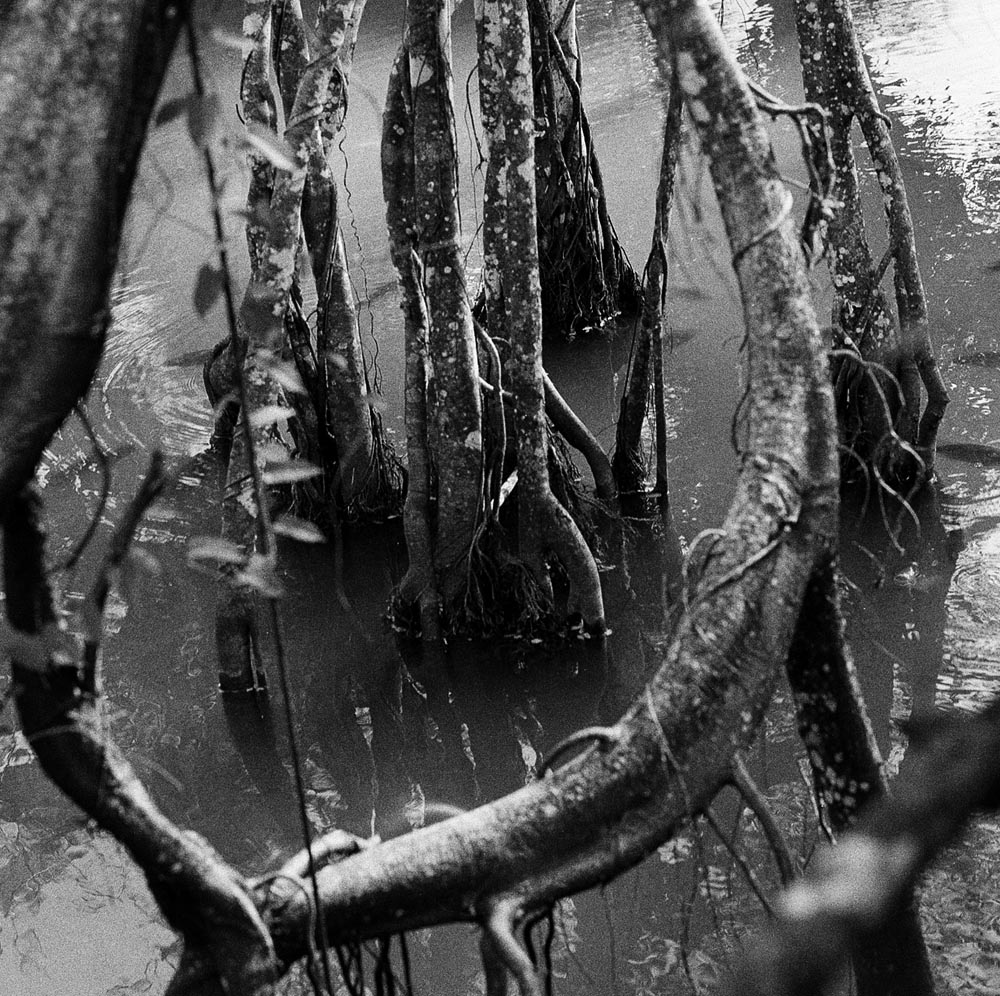
From the series "Springs of Hope", Trenggalek, East Java. (Hasselblad 500CM/ Ilford HP5)
How do you make your work, does it start with a sketch?
Typically I write a note on my phone or laptop every time I come across an idea, consequently I do mind-mapping and fortunately there are a good amount of apps which makes it easier nowadays, even Canva provides it. Thereafter I utilize Trello to tune-up the project management.
Related to “Irawan Grandfather's House and The Protected Neighborhoods” project, I already composed several boards according to its classification on my Trello. Started from digital archives that I found from the internet, news, scientific journals, treatment references, distribution projection plans, and what it would be like if the project became a published photobook as well as an exhibition.
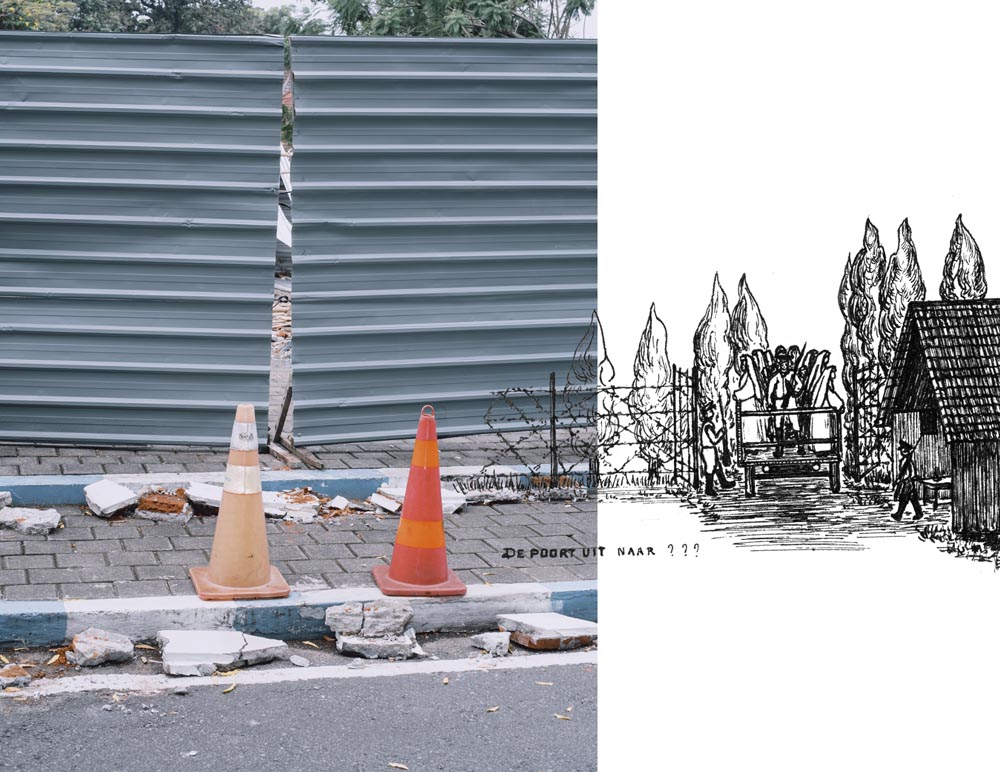
Left : Zinc fences surrounds Tjerme Park area Right : A sketch of the nuns carried their suitcases out of Interinternment camp. Sketched by Sister Veneranda (Jarmila Horàk - collection of KITLV)
There are also projects that relied more on intuition in the process, as I see it not all stories could use the same process. However, if it's possible to arrange the framework, it would be easier and hasten the process. But on the other hand, we could be easily trapped in monotonous routines.
My newest project “Dampit Retrospective” which tells about the Robusta Coffee producing village in Indonesia, is an example of a project that relies on intuition. Although at the outset I read a considerable amount of references, in the process I became more susceptible on how there are various possibilities ahead. I discussed a lot with people, strolled around the village and picked up the visuals I found, then I looked at the photos that I had taken, and tried to arrange it, afterwards set off once more to take photos that I needed. And the cycle goes on.
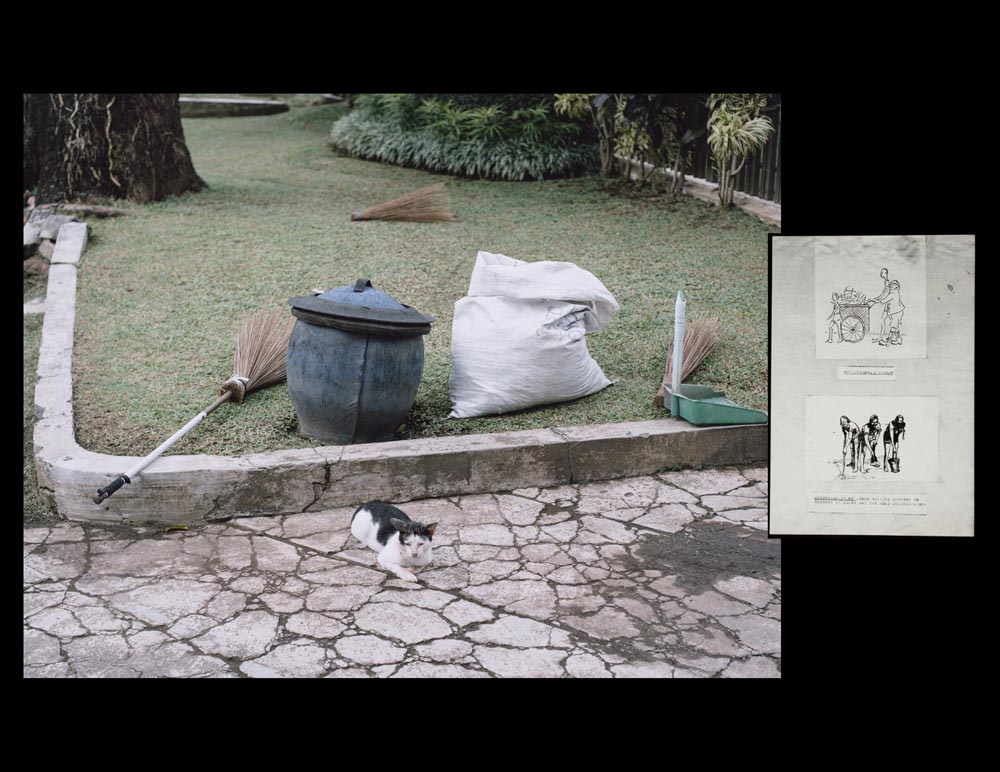
Left : Garbage collection tools in Anjasmoro St. sidewalk Right : A sketch of Interinternment camp prisoners works as garbage collector. This sketch is one of Oorlogs Bronnen’s collection.
In regard to the “Jellyfish Signals” project, about the jellyfish population explosion as a consequence of marine pollution, I started with a proposal and a strict shoot list due to its requirement to travel into several different locations. A well-thought shoot list is a significant thing considering the time and expenses needed.
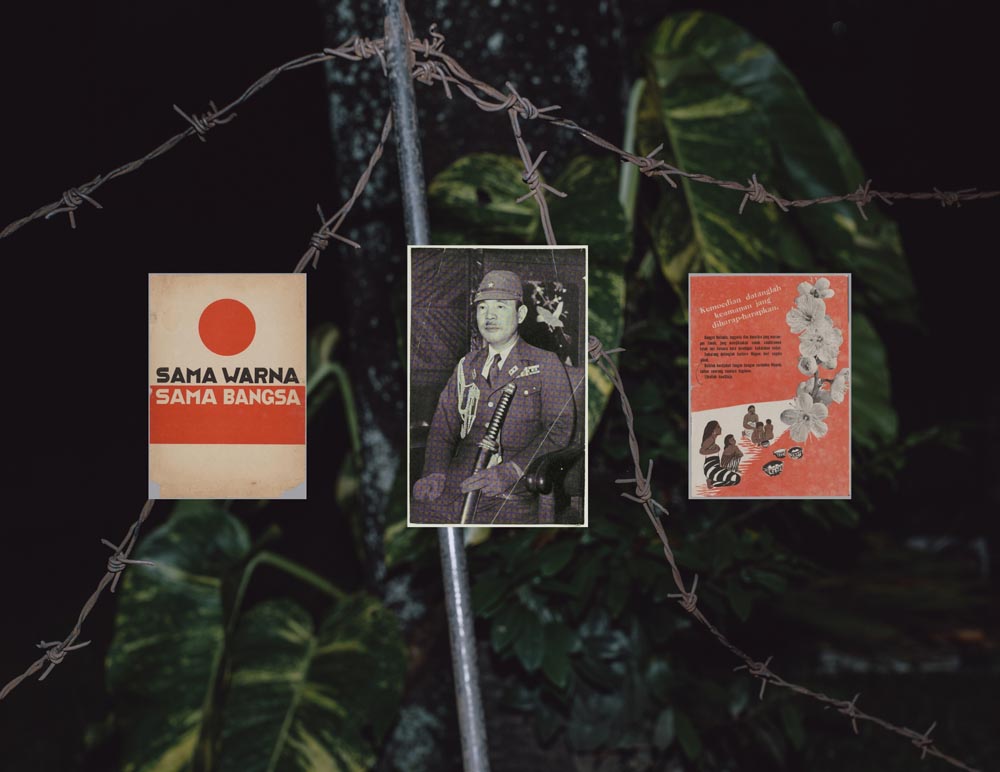
A montage of Japan propaganda (collection of KITLV)
Do you have your own studio ritual? What does that look like for you?
I am strangely the type of person who enjoys working in silence. I tried composing a music playlist and played it while working, but it doesn't suit me. Hence for now, music or songs are bound either as my travel companion in the car or remedies for my boredom. At that moment I will pause all of my work and sing along. Once I feel fresh and new, I will go back to my work in voicelessness.
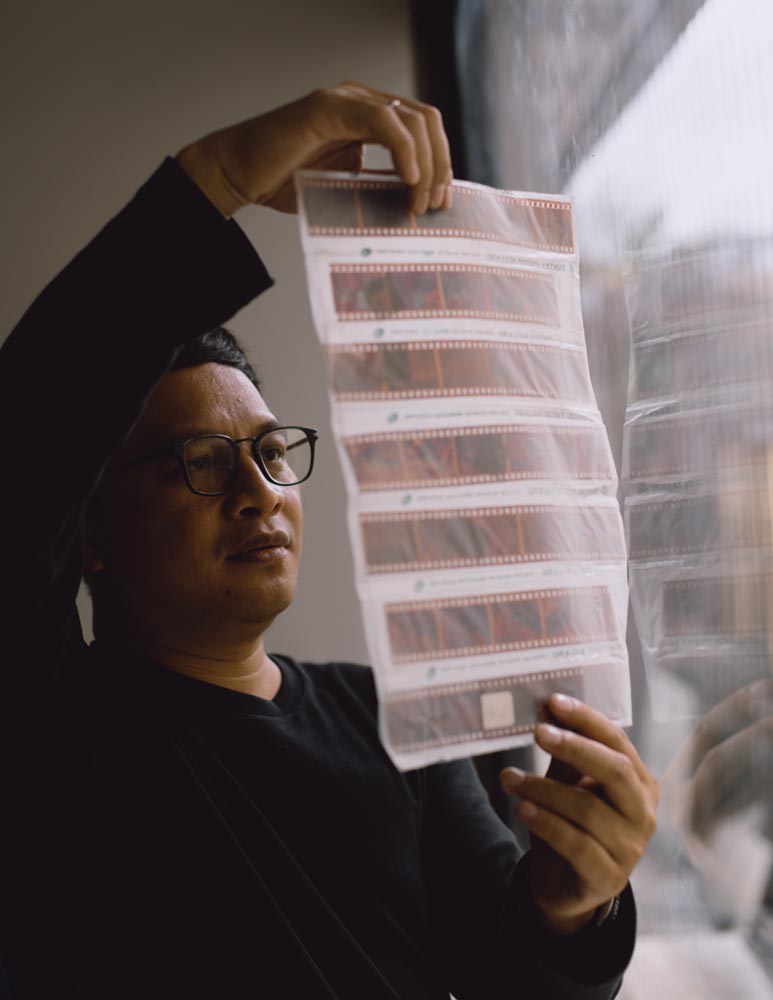

Photos by Bayu Novanta
I don’t have particular time dedicated to work, nonetheless when it is close to the deadline I will be even more excited and my creativity just sort of flows. I naturally am a morning person, thus I do nothing and take pleasure in a cup of morning coffee and small talk. However it is a different story if that specific day is the photoshoot day, it all depends on the story that is arranged. Namely, when I shot “Irawan Grandfather's House and The Protected Neighborhoods” I started it at 2 o’clock early morning, for the reason I needed to experience how eerie the location is. I wish to feel the horror that Japanese prisoners felt at that time. Whether I managed to convey it in the visual I made is another matter. But importantly I can feel the aura.
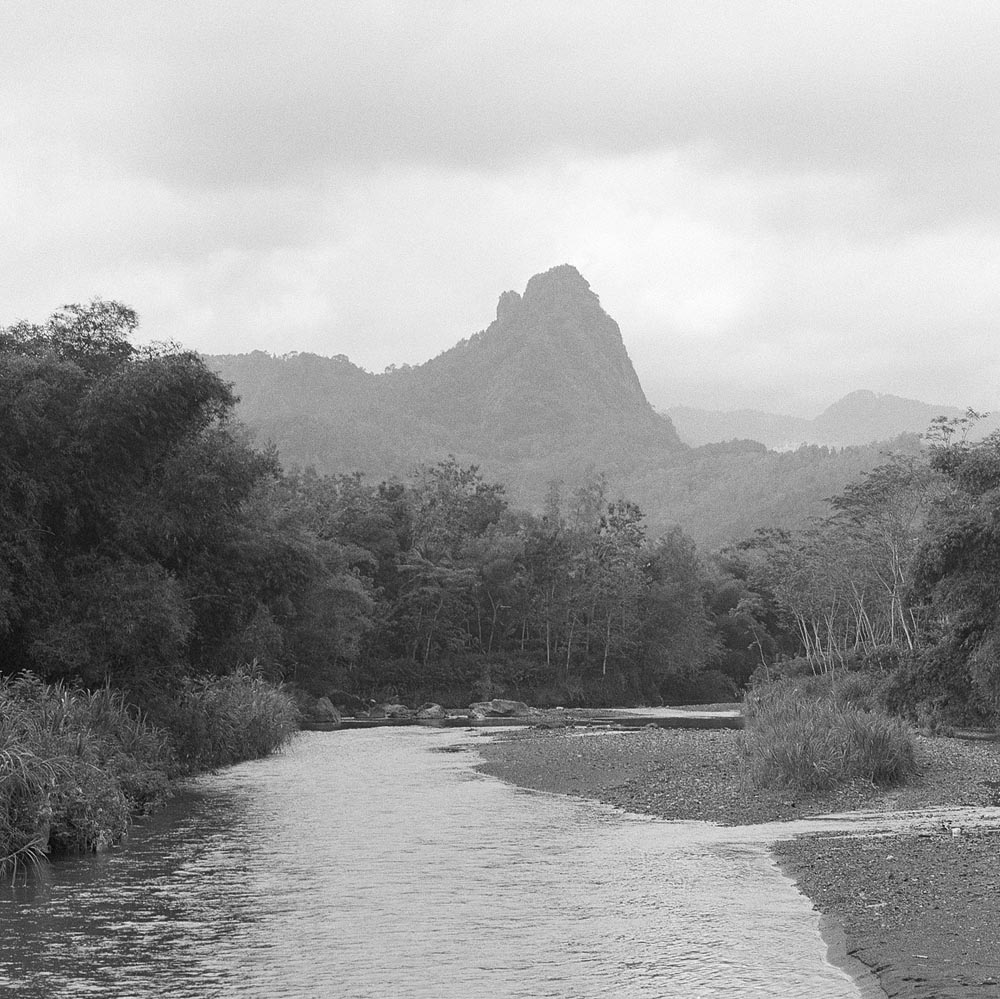
From the series "Springs of Hope", Trenggalek, East Java. (Hasselblad 500CM/ Ilford HP5)
Who are your biggest influences?
My biggest influence at first is Abbas, I admire this Magnum photographer. Hence my early work had a religious theme, especially in Indo Islam series. My photos are dominated by black and white visuals. It is also the reason I adore Paolo Pellegrin and Trent Parke.
For the time being, the genre that I loved became broader along with the increase of references. But I gave more of my attention to Gregory Halpern, maybe because I started playing with an analog. I am fond of Halpern’s works which look simple and calm, but sometimes have a surreal feel to them.
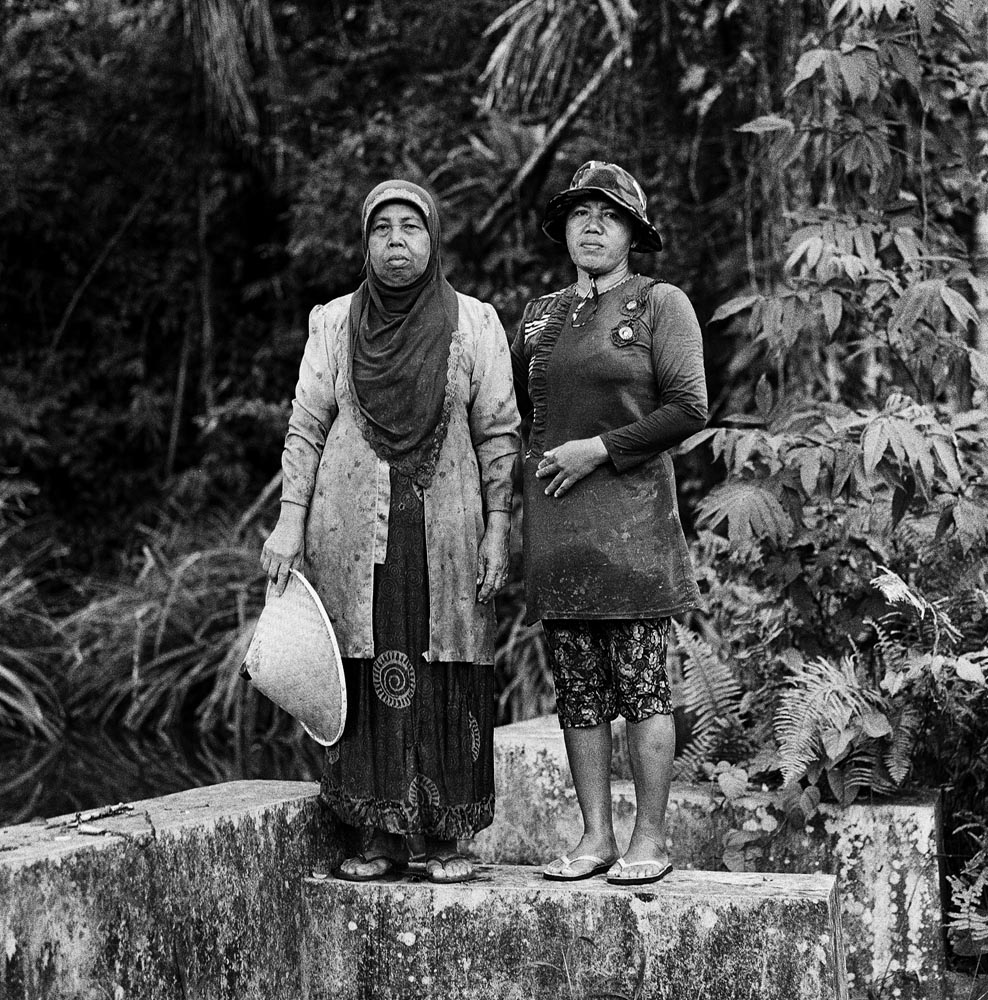
From the series "Springs of Hope", Trenggalek, East Java. (Hasselblad 500CM/ Ilford HP5)
From Gregory Halpern’s work I see the essence of photography once again: imperfection. I am not a fan of photographs that are too sharp, too dramatic, so far from what we see. For me, a photograph that sometimes has less focus, shaking, and less precise exposure, that is the manifestation of us as a human as an imperfect being.
Are there books or films that are an important source of inspiration?
I have several photobooks from Martin Parr, Daido Moriyama, Trent Parke, Henri Cartier-Bresson, Koudelka, Rafal Milach and more. But the one book that I most often open and read is Vacation by Judith Black. To read Vacation for many times it’s not boring at all. I genuinely feel like seeing a family vacation photo album.
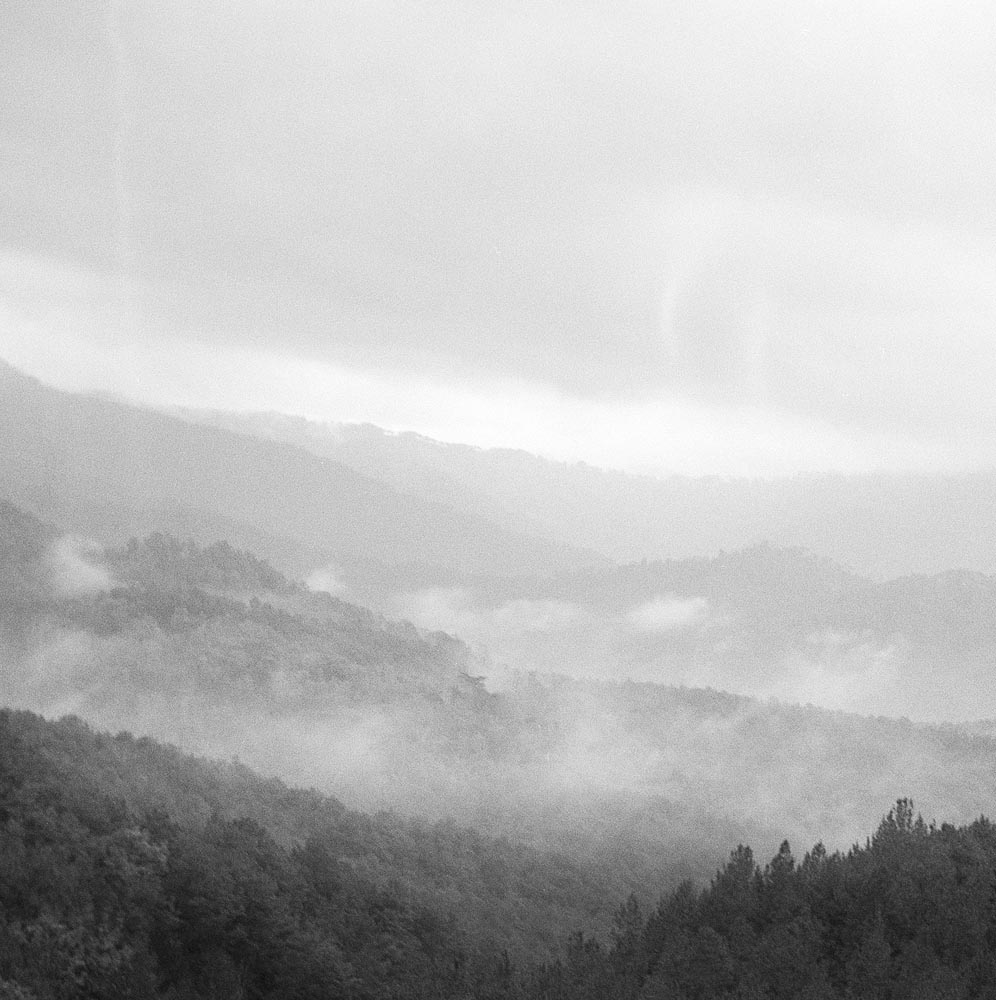
From the series "Springs of Hope", Trenggalek, East Java. (Hasselblad 500CM/ Ilford HP5)
Maybe this is because I never had a family photo album, or even a family vacation in my childhood, I believe that I never had that experience. A number of important albums such as my first wedding, my sister’s wedding, the last time I came back to my childhood house in Pati, Central Java all are gone. It’s been said that everything was thrown out by my late mother before she died.
What’s the best piece of advice you’ve been given?
I saw a lot of potential without belief, determination, and hard work that ended up in vain.
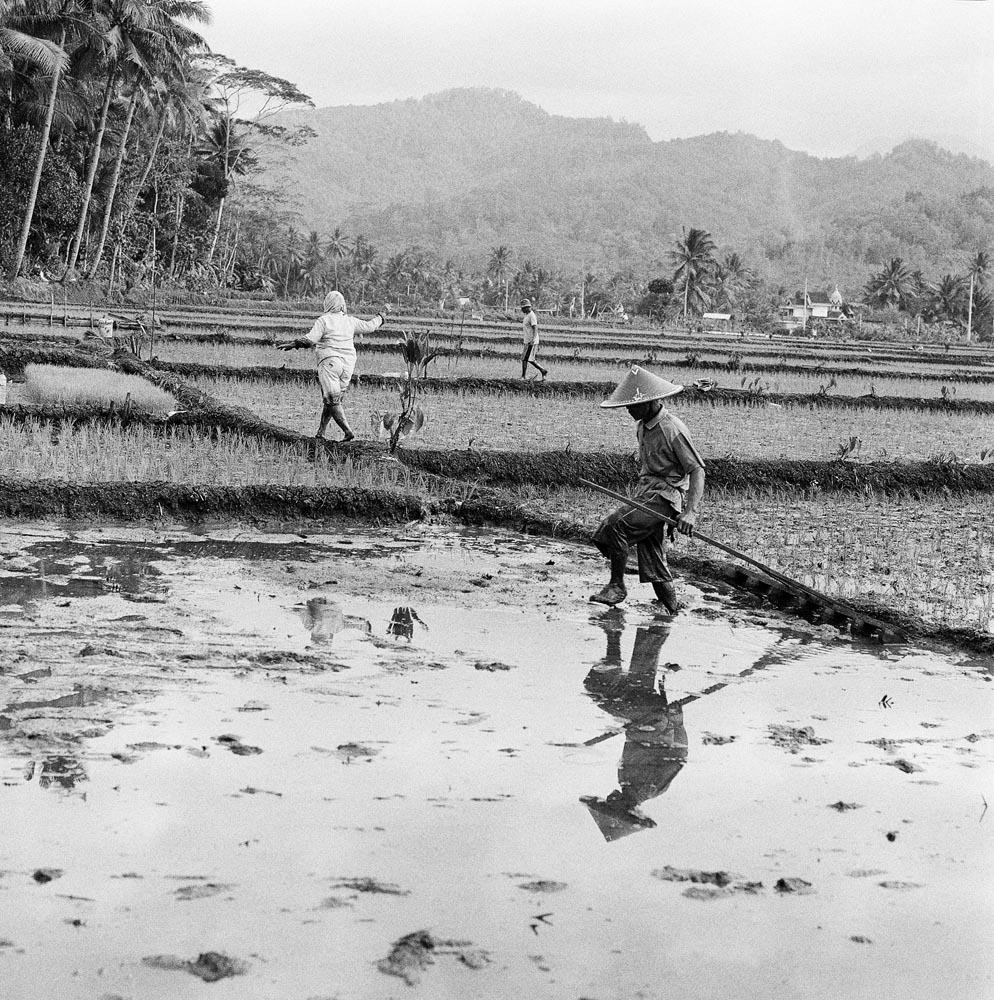
From the series "Springs of Hope", Trenggalek, East Java. (Hasselblad 500CM/ Ilford HP5)
What is the best advice you would give to other artists?
Have faith in the choice and never be afraid to compete. Study the market, but never worry about the market. As an artist, our product is an art. Good art will have its own market.
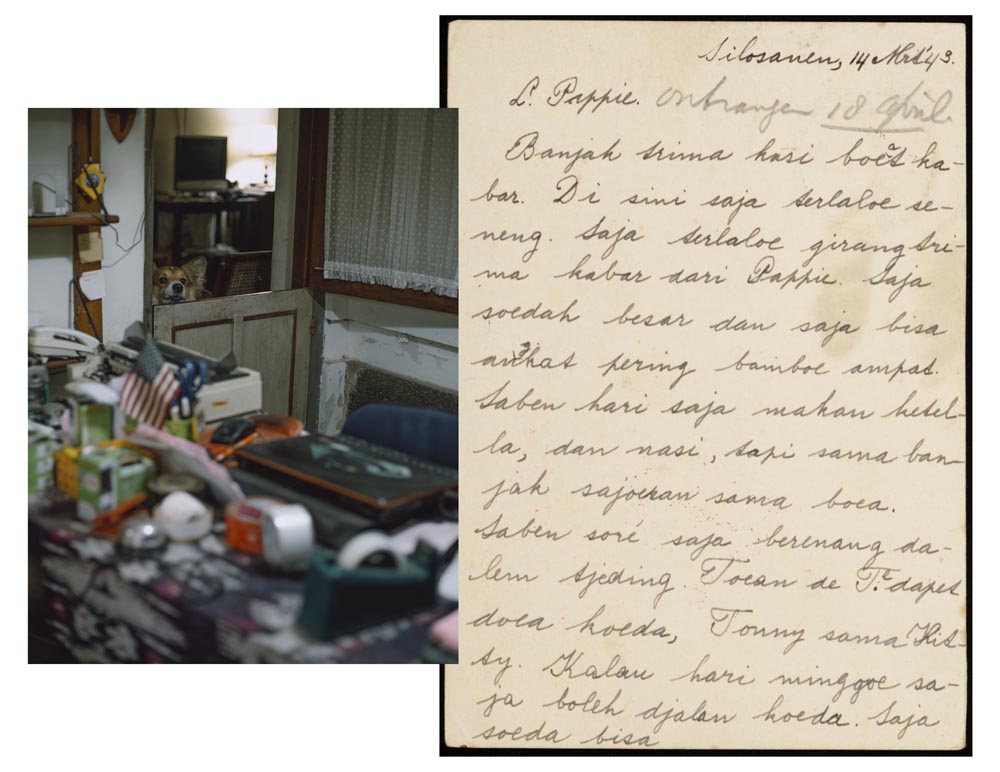
Left : Irawan’s dog at in-house working space in Anjasmoro St. number 25 Right : A postcard from a little boy, a prisoner in Interinternment camp Malang gave his father updates (collection of Oorlogs Bronnen)
Stay up to date with Arief Priyono
Instagram @arief_priyono
ariefpriyono.com